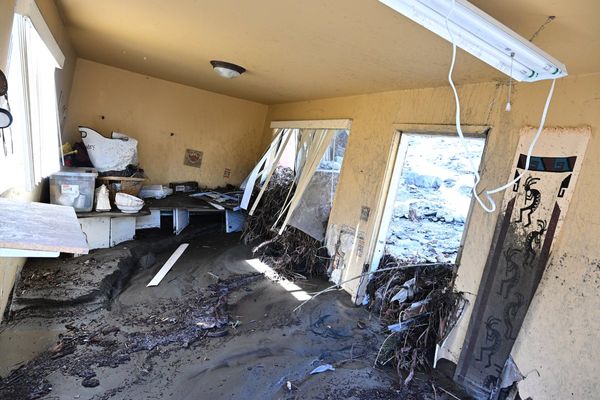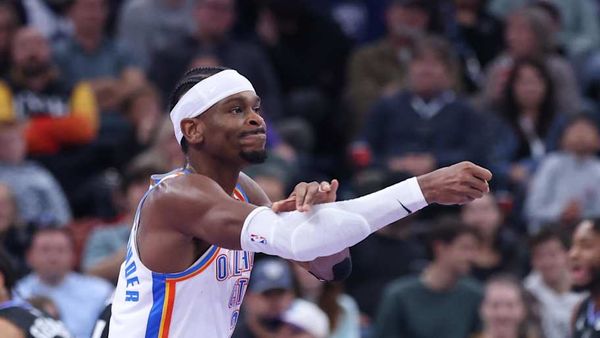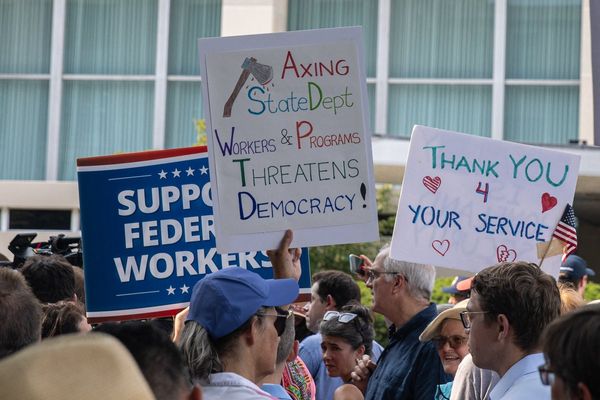Artificial intelligence is making its way into more and more aspects of our lives, and the art world isn't immune.
AI image generators such as DALL·E 2 and Midjourney are helping people create never-before-seen images, and the latter even won an art competition against human opponents.
So we decided to put DALL·E 2 up against ABC designer Emma Machan to ask the simple question: Can you spot which of the following 10 artworks were created by a computer algorithm?
We've given five prompts to the AI and five different prompts to our designer.
After the quiz, we ask an expert to explain how AI image generators work and how to best identify their creations — so don't skip to the end unless you want spoilers.
Now get guessing!
Were these artworks created by AI, or a human?
How can you tell if an image was made using AI?
Brendan Murphy, a lecturer in digital media at CQUniversity, says it can be "very hard to tell" if an image was created using artificial intelligence, but there are some telltale signs.
"Things like hands are a big problem. Things like the mouth, the teeth, the ears are going to trip it up," he says.
"You might see that the floors of buildings might not line up properly.
"There are things that just seem a little bit off. It's those little details. The things that probably also pose more difficulty for human artists."
Take the dolphins in the quiz above, for example.
"It looks to us like it really understands this stuff, because it almost had a Last Supper kind of arrangement and everything was almost just right," Mr Murphy says.
"But there was a dolphin just floating above it all that just didn’t belong in the composition. So it’s a funny mixture of really getting it right and not always understanding it.
"All of these glitches, in theory, can get better in time as the technology improves and they keep training it with more data.
"So will we reach a point where we can't tell a difference at all? I think we probably will, but we're not there yet."
How do AI image generators actually work?
Systems such as DALL·E 2 aren't just searching the internet for images and stitching them together. They are trained using a large number of images and corresponding captions. They then use machine learning to identify patterns within the data.
Mr Murphy says that while he has a degree in physics, maths and computing, he still doesn't fully understand how such systems work — and their creators likely don't either.
"We can't look into the box and understand it. The system has looked at lots of information and it has made up its own rules that we don't understand," he says.
"But those rules are based on looking at actual images with actual descriptions, so it has picked up a lot of techniques, a lot of knowledge, but it's all just statistics and correlations.
"Because these systems take all of the images and information that they're given and break it down into a whole lot of really abstract numbers that don't mean anything to us, there's not any guarantee that even the people that created the systems would necessarily have the answer."
I also put this question to a powerful AI chat bot named ChatGPT — also made by DALL·E 2's creators OpenAI — and asked it to explain how DALL·E 2 works.
Its response was pretty spot on.
"[DALL·E 2] uses machine learning algorithms to generate images based on text descriptions, allowing it to create pictures of objects or scenes that do not exist in the real world," it said.
"DALL·E 2 has been trained on a large dataset of text and images, allowing it to understand the relationships between words and visual concepts.
"It can then use this knowledge to generate images that combine different elements in novel ways."
What does AI advancement mean for the future of art?
Mr Murphy says we are "rapidly approaching" a time when we won't be able to tell real images apart from photorealistic AI-generated ones.
"If we can do this with artwork, it's just a matter of time until we can do it with anything," he says.
"I think a really radical change is coming, and I'm not sure how things will shake up, but I think it will make physical artworks – things with real paint on them – much more important, and digital art much less important. Because we'll never really know whether there's a real artist behind it or not."
He says one lesson of past technological changes has been that the true consequences of a technology aren't always anticipated by its creators, and AI art is already raising questions around things such as copyright.
"There's a lot of discussion at the moment about people thinking copyright has been breached, but it's not, because no actual images are in the system, it's just numbers," he says.
"It's almost like another little space that we don't have access to. Another dimension, in a sense."
Mr Murphy says whatever happens next, developments are only going to speed up.
"I've been teaching digital media for well over 20 years, and I've never seen anything move with this speed before."
AI artworks by OpenAI: DALL·E 2
Human artworks by ABC News: Emma Machan







